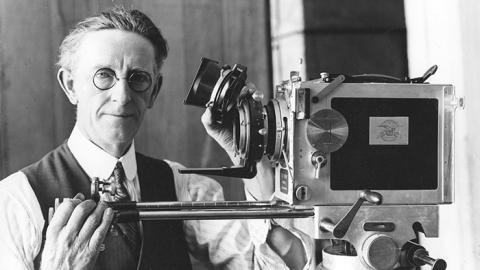
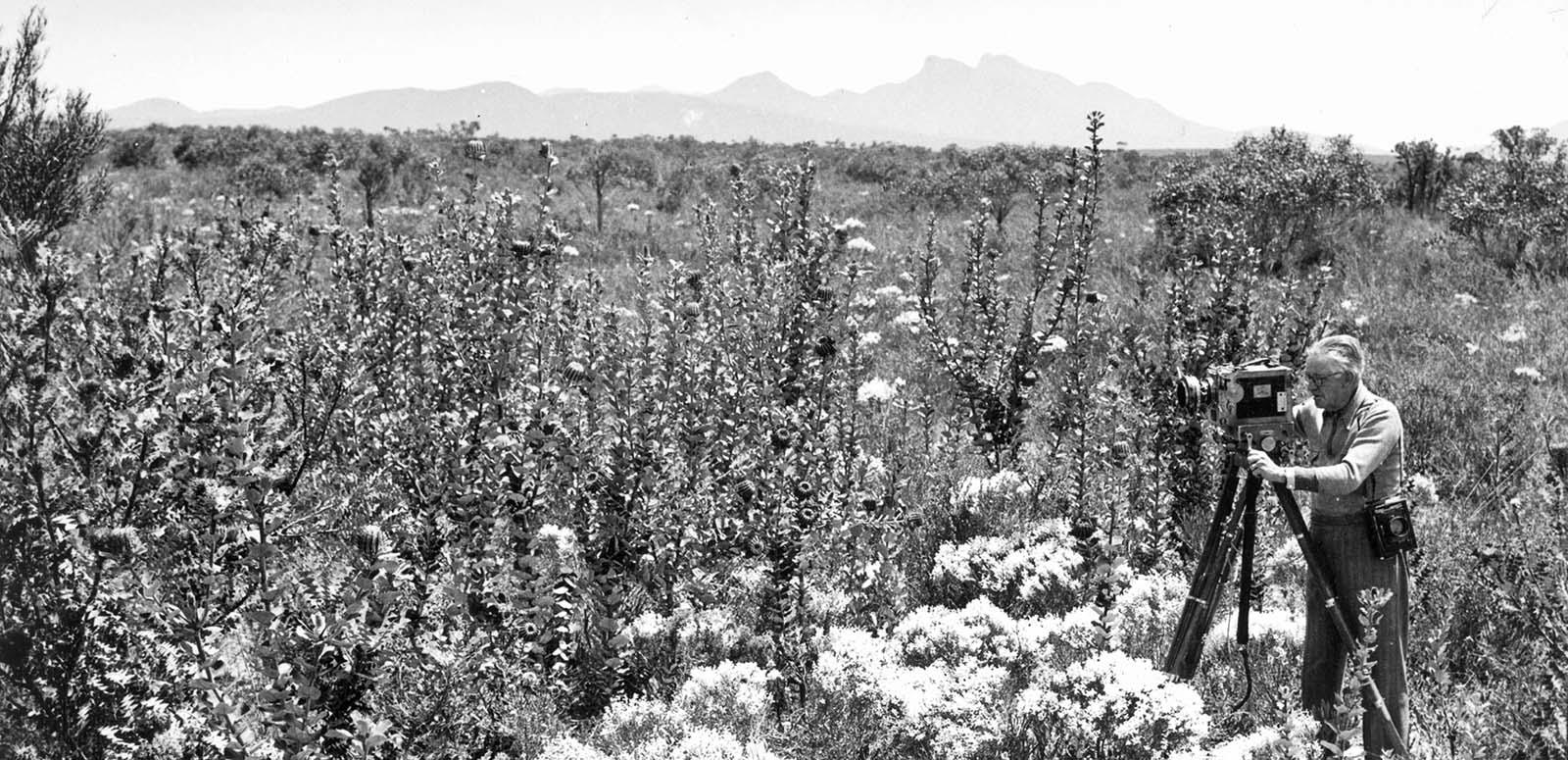
Bert Ive: Telling the World
8 March 2013 to 31 May 2013
Liversidge Street Foyer Gallery. FREE entry
This exhibition celebrates over 100 years of documentary filmmaking on behalf of the Australian Government with a focus on its first long-term cinematographer Bert Ive.
Telling the World (1929). Produced by the Cinema and Photographic Branch. Part of the NFSA’s Film Australia Collection. NFSA title 14139.
As federal government cinematographer from 1913 to 1939, Bert Ive (1875–1939) constantly travelled the length and breadth of Australia to film the nation’s landscapes, people, industries and notable events. The moving images and still photographs he captured were used to publicise Australia around the world.
Born in England in 1875, Bert Ive migrated with his family to Australia, where he initially worked as a glass embosser, signwriter and decorator. From 1897 he became a film exhibitor and cameraman of actuality and dramatised films. In May 1913 the federal government appointed Ive to the position of cinematographer and still photographer.
Over a 25-year period, the newly established Cinema and Photographic Branch grew from Ive working as its sole staff member into a Melbourne-based organisation with its own studio, laboratory, stockshot library and producers, editors and cameramen. The Cinema Branch completed one film per week during the pre-1930 silent era, with many appearing in the series Know Your Own Country and Australia Day by Day.
Until his death in 1939, Bert Ive remained central to the Branch’s camerawork. His films encouraged the sale of Australian goods and tourism, and in the 1920s they attracted migrants. Ive notably filmed such events as the building of Canberra, the transcontinental railway and the Sydney Harbour Bridge, along with royal tours and the departure of the first convoy of the AIF for Gallipoli.
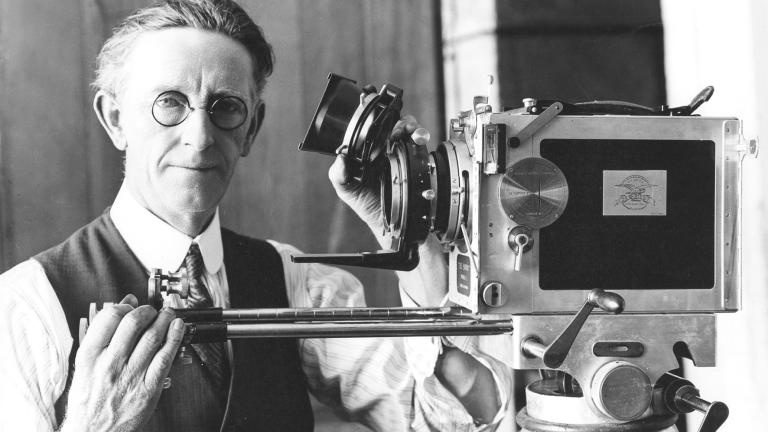
Commonwealth cinematographer Bert Ive in studio holding a lens component next to a Debrie camera.
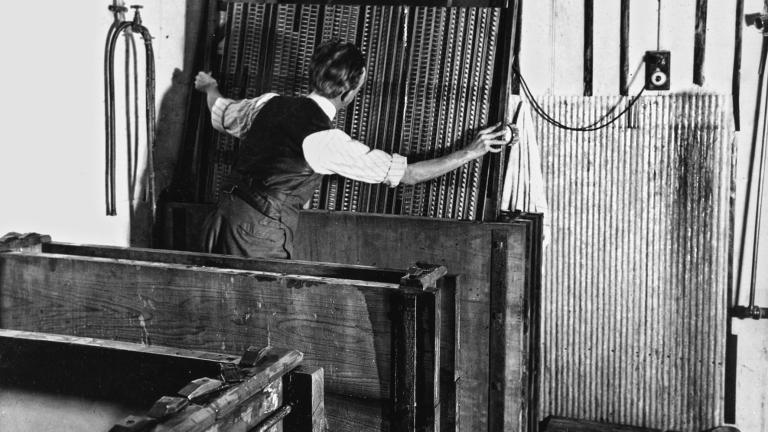
Commonwealth cinematographer Bert Ive, inserting a rack of film into a drying rack, at the Cinema and Photographic Branch.
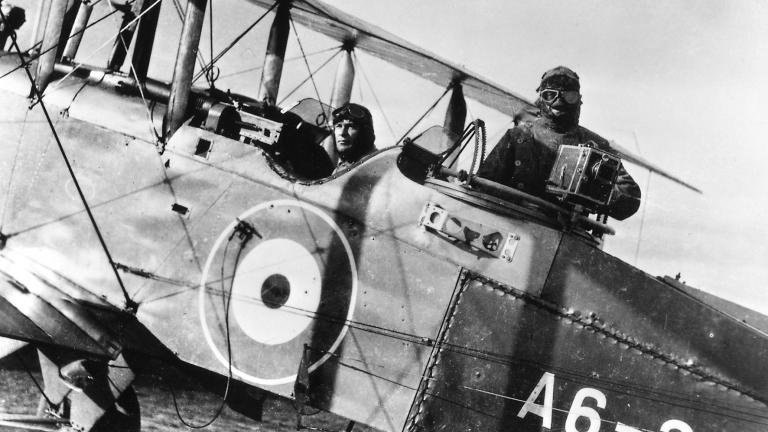
Commonwealth cinematographer Bert Ive standing in a Tiger Moth aeroplane. There is a camera strapped to the plane and a pilot is seated in the front.
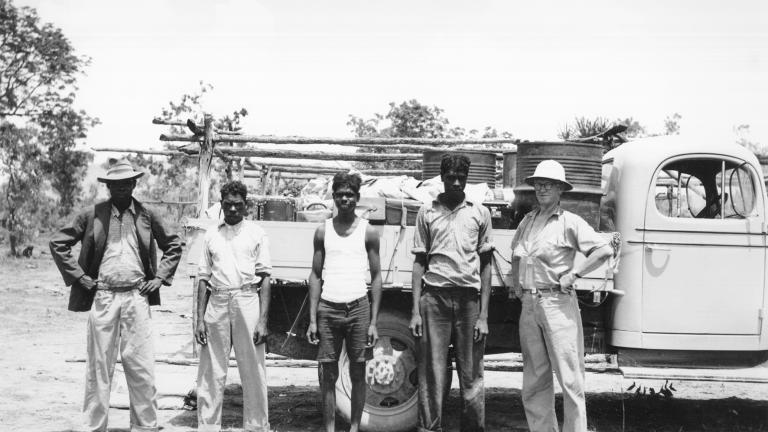
Cinematographer Bert Ive standing with four Aboriginal stockmen beside a utility truck. The truck contains essential items such as film equipment and water tanks required for long outback trips.
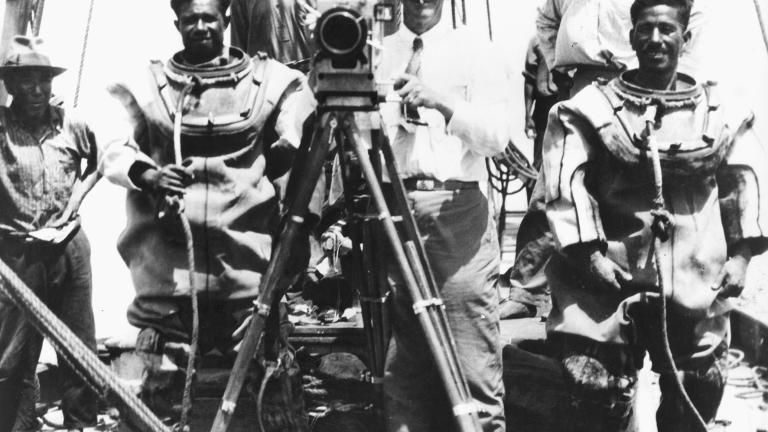
Commonwealth cinematographer Bert Ive, standing on a lugger behind a camera on a tripod, in between two pearl divers, during a nine day trip out from Broome in 1929.
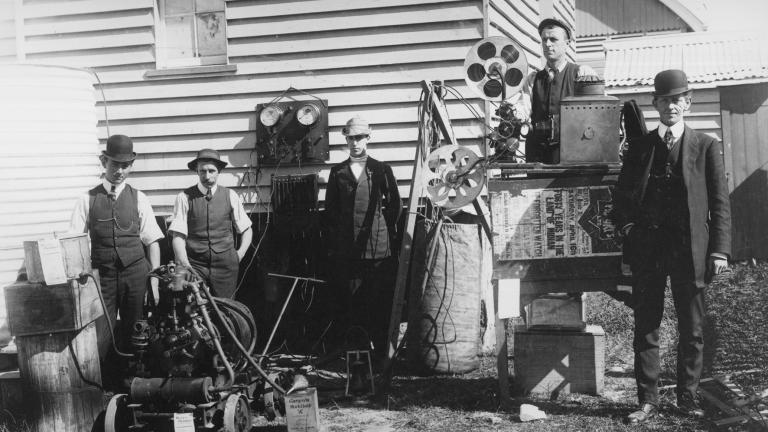
Cinematographer and film exhibitor Bert Ive (far right) standing with projectionists and film projection equipment outside Centennial Hall in Adelaide Street, Brisbane. Photo taken in early 1910s prior to his appointment as Commonwealth cinematographer.
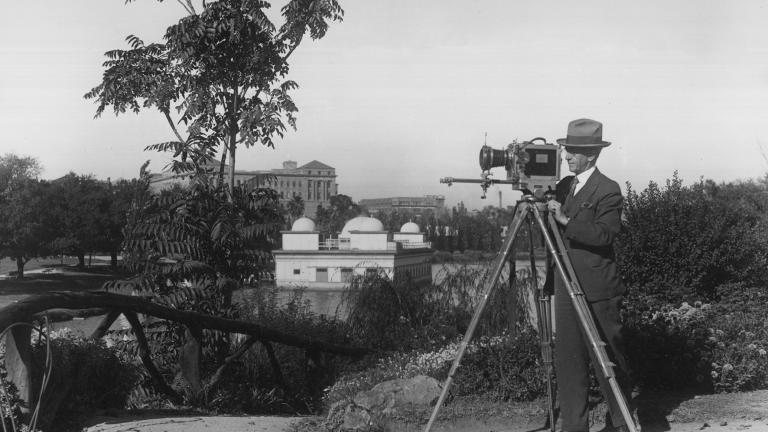
Cinematographer Bert Ive is standing on a garden path by Torrens Lake in Adelaide in 1929 with his camera on a tripod.
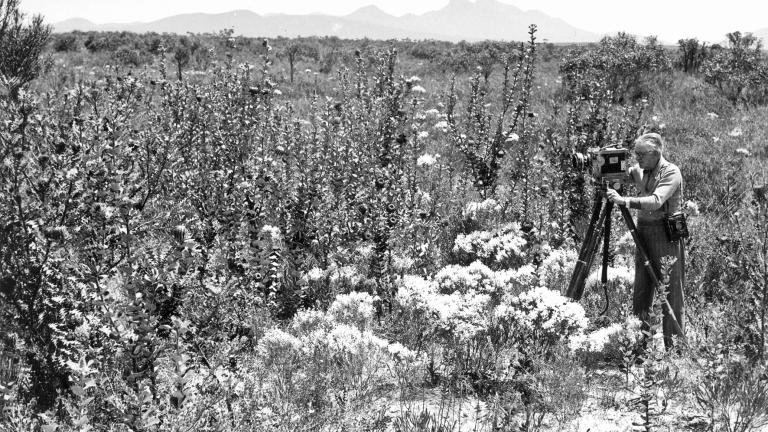
Commonwealth cinematographer Bert Ive standing in a field of native flowers, behind a Debrie camera on a tripod, with a stills camera slung over his shoulder.
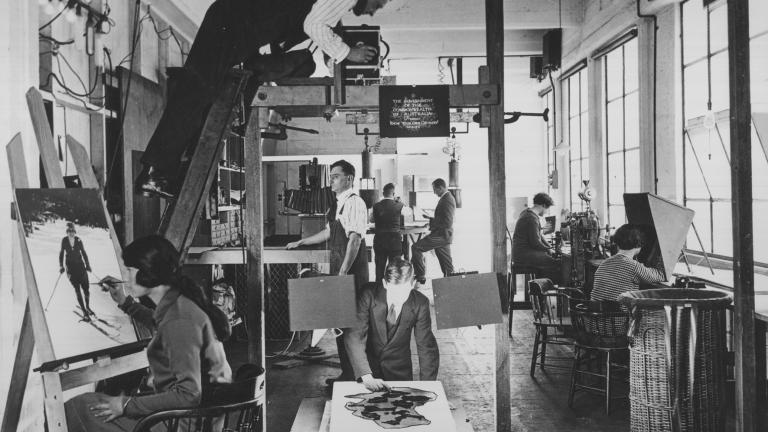
The workroom at the Cinema and Photographic Branch. Cinematographer Bert Ive is on a ladder using the titles camera. A man below him positions cut-outs while other people can be seen touching up photographs and editing.
The National Film and Sound Archive of Australia acknowledges Australia’s Aboriginal and Torres Strait Islander peoples as the Traditional Custodians of the land on which we work and live and gives respect to their Elders both past and present.
